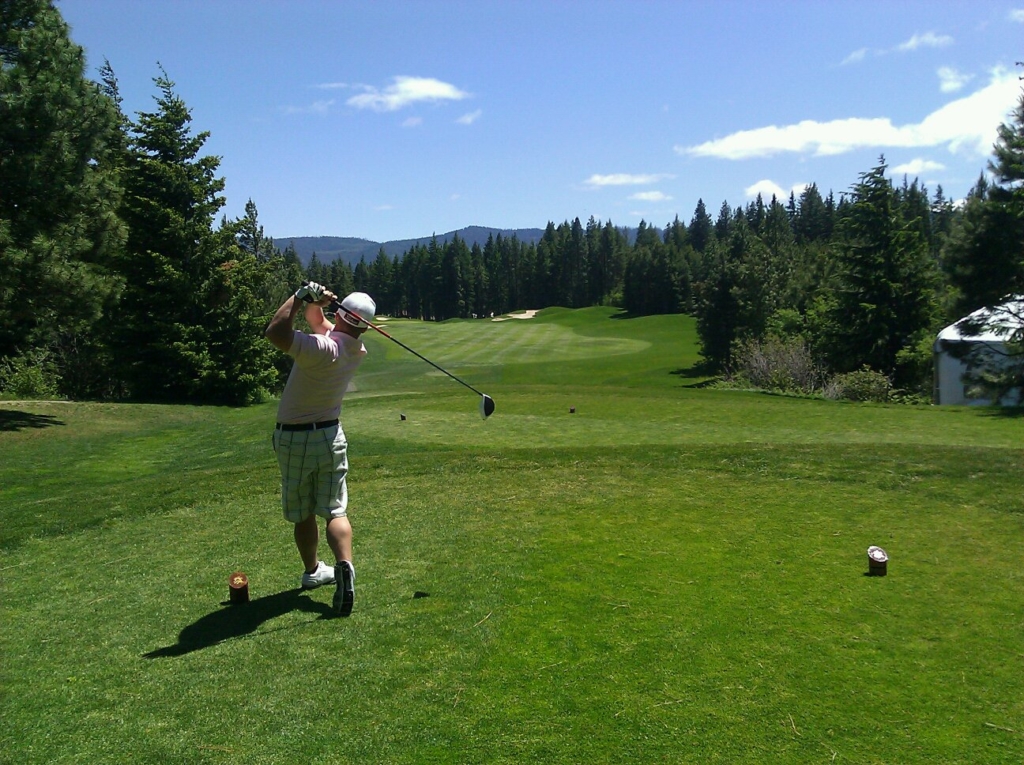
Recently, a training run provided some thought-provoking questions as my run took me past a local golf course. I’ve run this exact route hundreds of times over the years, but during this particular jaunt, it occurred to me how empty the parking lot seemed. At first, I wondered why a beautiful Saturday morning during the summer wouldn’t be their busiest time. Then suddenly I thought, “Yikes. Maybe this is their busiest time?” I was only about two miles into a ten-mile run, so for the next eight miles my mind twisted and turned over this question.
I couldn’t keep my mind from wandering onto the topic of obstacle course racing as well. In this case, it occurred to me how oddly similar OCR and golf really are, and how right now their fates in the collective consciousness of the American sports enthusiast might be headed in opposite directions, and are possibly nearing some sort of convergence.*
Besides both being a sport, how are golf and OCR similar?
Let’s start with the notion that both OCR and golf are what I would consider “perimeter” sports, simply meaning that they are not one of the “Big Four” in the United States (Football, Baseball, Basketball, Hockey). That’s not to suggest that OCR is on the same level of overall popularity as golf. It’s far from it. Here’s a quick litmus test: does your local high school have an OCR team? Nope. Do they have a golf team? Probably. Both are more ancillary than the most popular sports, which directly affects how they are structured and funded.
 Which brings me to my next point. Both of these sports are supported by for-profit industries. It’s likely that your local YMCA or any host of churches put on some sort of recreational basketball league, and they’re goal is simply to provide an opportunity for community outreach; they’re lucky if the registration fees cover their costs. Our own local civic center has an adult hockey league for men and women who need to occasionally scratch the itch to suit up and slap around a puck; they’re certainly not turning a profit. What about your park district’s men and women softball leagues? Same story. But when you want to hit the links or get muddy at an OCR, you’re relying on a business to provide that opportunity, and we all know the unfortunate fact that if money isn’t being made, events don’t happen, and fairways aren’t open.
Which brings me to my next point. Both of these sports are supported by for-profit industries. It’s likely that your local YMCA or any host of churches put on some sort of recreational basketball league, and they’re goal is simply to provide an opportunity for community outreach; they’re lucky if the registration fees cover their costs. Our own local civic center has an adult hockey league for men and women who need to occasionally scratch the itch to suit up and slap around a puck; they’re certainly not turning a profit. What about your park district’s men and women softball leagues? Same story. But when you want to hit the links or get muddy at an OCR, you’re relying on a business to provide that opportunity, and we all know the unfortunate fact that if money isn’t being made, events don’t happen, and fairways aren’t open.
Both of these sports are supported by for-profit industries.
It also occurred to me that an enthusiast of either of these sports is somewhat limited in terms of when and how they can actually compete. If I told you right now to stop reading this and go run an obstacle course race, could you? Unless these words are jumping off your smartphone just before heading to the starting line of a race, the answer is probably no.
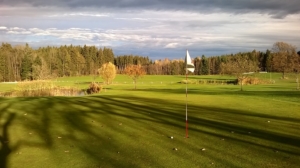
It’s a little easier for a golfer since most communities has a course or two, but even then, you have to secure a tee time, and you have to pay for the right tee the ball up on the first hole. As a racer, the best we can do is carefully select those races that are nearby, or to which we can afford to travel. In the meantime, we fill our day's training, getting ready for those race weekends. Some of us have the luxury of a nearby OCR themed gym, or maybe we take advantage of the local playground’s monkey bars. We run countless miles, practice free-hangs to strengthen our grip, seek out hills to build up our elevation endurance, climb ropes hung from trees, and carry any heavy object we can find, all while wishing we could just be out on a course racing. There are very few good ways to simulate race day conditions.
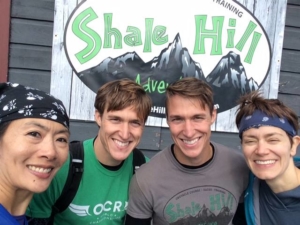 Is that really any different than the guy plowing through a bucket of balls at the driving range after work on Wednesday, or the woman who spends three hours a week working on her putting game? Heck, if you watch closely, you’ll notice fitness trainers that offer customized programs intended to help people improve their golf swing.
Is that really any different than the guy plowing through a bucket of balls at the driving range after work on Wednesday, or the woman who spends three hours a week working on her putting game? Heck, if you watch closely, you’ll notice fitness trainers that offer customized programs intended to help people improve their golf swing.
Sound familiar? The bottom line is that you have to pay to play, and your opportunity to actually engage in the sport itself is somewhat limited.
Let’s also consider the rules that govern both OCR and golf. Clearly, they are not interchangeable, but in many ways, they are administered the same way, and how closely they are followed (or not followed) bears many similarities. Recently on Mud Run Guide, there was a well-written article about the prevalence of “cheating” in OCR, and whether it really matters.
The elites are subject to the rules of course, but many of the open wave participants are there strictly for a good time and aren’t too interested in things like mandatory obstacle completion, etc.
 Ever heard of a “gimme” in golf?
Ever heard of a “gimme” in golf?
It’s when your ball is close enough to the cup that the other members of your foursome concede that you don’t need to actually putt the ball – it’s a gimme! Or how about when you shank one off the tee box, and ask for a “mulligan”, or essentially a do-over? Ever heard of a golfer using his or her foot to “fluff” the ball up on a nice tuft of grass, improving its lie so that it’s easier to hit out of the rough? Of course, like our beloved OCR elites, these practices never take place on the PGA tour because they violate the rules of the game. But, they are all common practices for your average duffers killing four hours on a Saturday, who are really just looking to have a good time. The interesting part comes when you have someone whose competitive juices far exceed their talents, and who gets fired up when someone they’re “playing against” employs one of these tactics, and doesn’t adhere to the letter of the law.
Again, sound familiar?
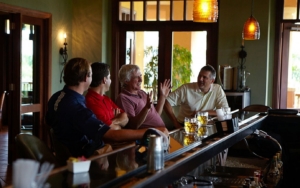 Finally, we can find more common ground in the traditions that follow the final drop of the ball into the cup on the 18th green, or the triumphant dash across the finish line after overcoming that last, epic obstacle. Go to just about any golf course in the U.S. on a Saturday or Sunday afternoon, and you’ll find the young and old alike, bellied up to the bar for the obligatory drink at the “19th Hole”.
Finally, we can find more common ground in the traditions that follow the final drop of the ball into the cup on the 18th green, or the triumphant dash across the finish line after overcoming that last, epic obstacle. Go to just about any golf course in the U.S. on a Saturday or Sunday afternoon, and you’ll find the young and old alike, bellied up to the bar for the obligatory drink at the “19th Hole”.
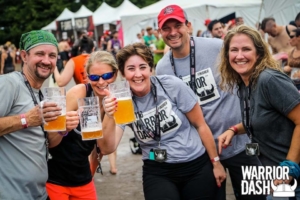 In the OCR world, we collect our finisher swag, and promptly head over to the beer tent for our celebratory, and usually complimentary, beer. You might say that’s the same way it works after a softball game, or after bowling league, or after a pickup game of b-ball at the Y, but it’s not. You may go for a drink after each of those, but you don’t normally do it at the venue in which you just played. In OCR, we do. And in golf, they do too. We might continue the festivities elsewhere, but we start them right then and there, wasting precious little time.
In the OCR world, we collect our finisher swag, and promptly head over to the beer tent for our celebratory, and usually complimentary, beer. You might say that’s the same way it works after a softball game, or after bowling league, or after a pickup game of b-ball at the Y, but it’s not. You may go for a drink after each of those, but you don’t normally do it at the venue in which you just played. In OCR, we do. And in golf, they do too. We might continue the festivities elsewhere, but we start them right then and there, wasting precious little time.
So what does all of this mean, and why should you, the OCR racer, care?
Remember earlier when I mentioned that the parking lot of that golf course was suspiciously empty for a Saturday morning? Turns out, that’s not simply a local phenomenon. Golf courses around the country are experiencing a decline in business at an alarming rate. According to the National Golf Foundation (NGF), a non-profit trade organization serving the golf industry, the average number of golf rounds played each year at public courses has dropped almost 20% over the ten year period between 2004 and 2014. That’s a decrease of nearly 6 million rounds per year!
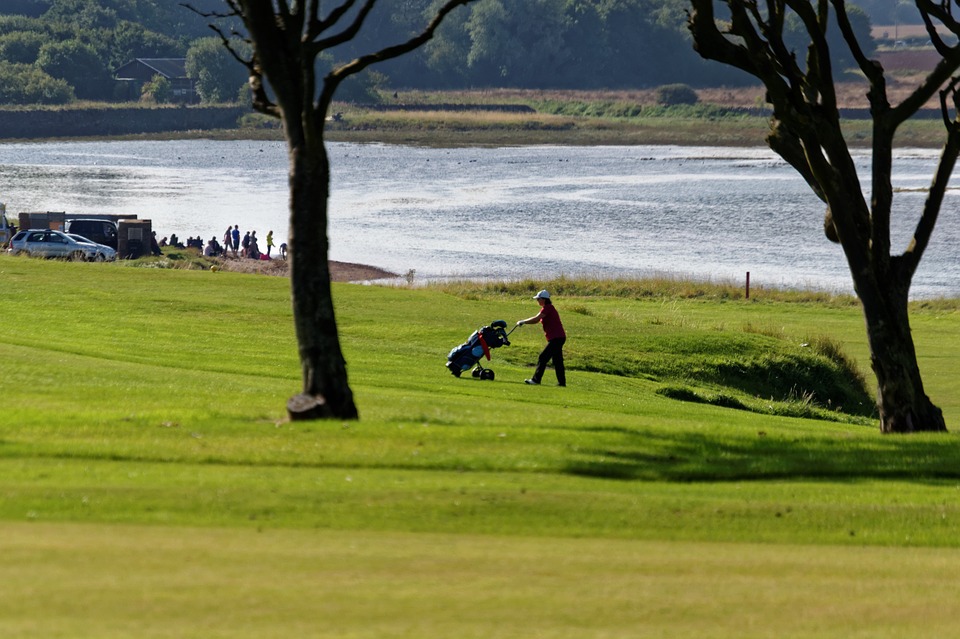
Additionally, the NGF also reports that over the last 20 years, the number of players between the ages of 18 and 34 has decreased by just over 30%. Reading between the lines, it’s obvious that golf is failing at grasping the interest of new, younger players. Want more proof that golf is in trouble? Since 2006, more golf courses have closed each year than have been opened.
In 2013 alone, 157.5 courses were shut down (I assume one was scaled back to a 9-hole course from an 18-hole course), while only 14 new courses were built. It’s actually reached the point where the golf industry as a whole is starting to panic a little bit, and have taken on the practice of rolling out gimmicks to attract new players.
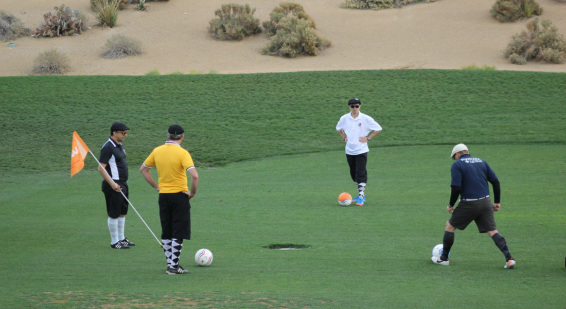
The local course I referenced earlier now offers Footgolf, which is basically playing golf with what amounts to a soccer ball, kicking it toward large cups instead of smaller ones typically used in golf. From what I gather, the thought process is that something like Footgolf might at least bring a younger crowd to the course, and once there, maybe they’ll become interested in the traditional game of golf. I’m not an expert, and I have no knowledge as to whether this is working, but I can’t help but think the entire premise is a little far-fetched.
This is where the most important similarity between golf and OCR comes in. As golf struggles and OCR grows, they are essentially after the same demographic of potential customers. At this point, golf is mostly living off of lifetime players, many of whom fall into the baby boomer category. That’s a dangerous place to be as that group continues to age, and their ability to play regularly wains and natural attrition becomes a reality. Golf needs that 18-34 year old participation.
Which Sport has the upper hand?
The arrow is pointing in the direction of OCR. There’s an increased focus on healthy living among the younger generations, and their idea of leisure time tends to include activities that are more active than golf. Further supporting the case for OCR is the relatively inexpensive entry into the sport. We often complain about the increasing cost of registration, but it’s not unusual for greens fees and cart rental to cost almost as much as many of the race entries, especially if it’s a quality golf course in a larger, urban setting.
But for golf, it isn’t just about the fees. You also have to have the clubs, the balls, the shoes, the bag, etc. Sure, some of us get a little caught up in gear when it comes to ORC, but when you boil it down, all you really need is a pair of old shoes, shorts and a t-shirt (often optional for the guys), and you’re all set. With so many members of the younger demographic being financially weighed down by student loans, it’s no wonder that they are somewhat dismissive of spending $1000 on golf clubs, $30 on balls, $100 on shoes, and then paying $100-150 per round. And let’s not forget the most obvious reason of all: if you’re just getting started, golf can be an agonizingly difficult game. Most of us will never be elite OCR racers, but that doesn’t mean the first time participant can’t go out there and have fun right from day one.
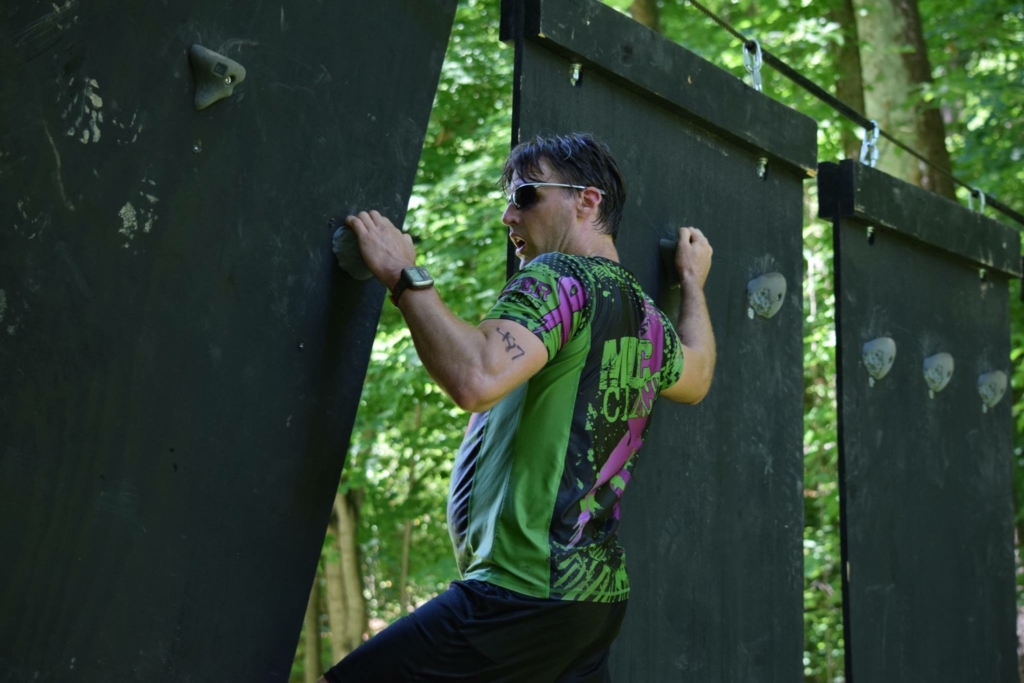 Clearly, both of these sports are somewhat in a state of flux at the moment. Golf is grasping at straws to win back its place in the minds of the young, while OCR is trying to get to the next level. We’ve recently seen the first steps in that process as both Spartan Race and BattleFrog Race Series have enjoyed coverage on a national television level. By all accounts, the ratings so far seem to suggest that more opportunities lie ahead. But, in what form those will take is the real question at hand. So far, the televised iterations of the sport have come as either modifications to the typical weekend races (“Spartan Ultimate Team Challenge” and “BattleFrog College Championship”), or in a documentary-style delayed coverage (“Spartan U.S. Championship Series”). If OCR is going to firmly implant itself as a sport, with wide-ranging commercial appeal, more broadcast exposure is needed, and at some point, the leap to live coverage will be essential.
Clearly, both of these sports are somewhat in a state of flux at the moment. Golf is grasping at straws to win back its place in the minds of the young, while OCR is trying to get to the next level. We’ve recently seen the first steps in that process as both Spartan Race and BattleFrog Race Series have enjoyed coverage on a national television level. By all accounts, the ratings so far seem to suggest that more opportunities lie ahead. But, in what form those will take is the real question at hand. So far, the televised iterations of the sport have come as either modifications to the typical weekend races (“Spartan Ultimate Team Challenge” and “BattleFrog College Championship”), or in a documentary-style delayed coverage (“Spartan U.S. Championship Series”). If OCR is going to firmly implant itself as a sport, with wide-ranging commercial appeal, more broadcast exposure is needed, and at some point, the leap to live coverage will be essential.
The difficulty, however, lies in the logistics of the sport itself. In its present form, OCR is very difficult to cover from a television perspective. Typical courses cover large expanses of land, as racers typically run anywhere from 3 to 12 miles, and fixed camera positions will obviously only capture the leaders once. Making matters even more challenging, the venues often include landscapes that create accessibility issues for necessary media tools such as broadcast trucks, cameras, etc. Factors such as these are part of the reasoning presented by proponents of the so-called “short course” format, which contend that in order to adequately capture live racing, the entire course must be shortened and positioned in a manner that allows for static spectators to view the entirety of the race (e.g., Spartan’s Stadium Sprints). While this does present a possible option, it doesn’t need to be the only future for televised OCR.
Live OCR at Golf Courses
 As the figurative paths of these sports begin to converge, the decline in golf’s popularity is creating a possible opportunity for OCR. As previously mentioned, golf courses are closing at an increased rate here in the U.S.; one simple google search generated a site with over 200 courses for sale right now. Not all of these courses are closed, but they are all for sale, and most are at bargain prices. The right golf course could represent the ideal venue for a permanent OCR course, designed specifically to accommodate full broadcast television crews and coverage. Golf courses have traditionally been constructed in areas that offer some variety of natural features (e.g., ponds/lakes, elevation gains, timber, etc.), which make them equally as attractive as race venues. In most cases, infrastructure such as cart paths, paved parking lots, and a clubhouse with meeting/reception space are already in place, all of which are utilized when media crews provide coverage of golf tournaments.
As the figurative paths of these sports begin to converge, the decline in golf’s popularity is creating a possible opportunity for OCR. As previously mentioned, golf courses are closing at an increased rate here in the U.S.; one simple google search generated a site with over 200 courses for sale right now. Not all of these courses are closed, but they are all for sale, and most are at bargain prices. The right golf course could represent the ideal venue for a permanent OCR course, designed specifically to accommodate full broadcast television crews and coverage. Golf courses have traditionally been constructed in areas that offer some variety of natural features (e.g., ponds/lakes, elevation gains, timber, etc.), which make them equally as attractive as race venues. In most cases, infrastructure such as cart paths, paved parking lots, and a clubhouse with meeting/reception space are already in place, all of which are utilized when media crews provide coverage of golf tournaments.
Perhaps the most compelling point to all of this is that the major sports networks already know how to operate in these settings. They’ve become quite good at telecasting golf events in which the audience’s point of interest is constantly moving, and will likely never be in front of the same camera twice. This is precisely the type of coverage that live OCR will require, and a converted golf course would practically be ready-made for it, almost catering to the networks’ needs.
This weekend, I’ll be heading out on another long training run, and will likely again pass that same golf course. The weather forecast is pretty good right now, and I can’t help but wonder how the parking lot will look. It’s difficult to predict what exactly the future holds for either golf or OCR, but as their paths continue to draw closer, it feels more likely that they’ll level out and run parallel, rather than cross. In either case, the similarities between the two sports are striking, and if OCR elevates to the next level, I can’t help but consider the irony that the sport of golf may in fact help that process along. Who knows? Maybe we’ll see the day when racers shout “Fore!” instead of “Aroo!”
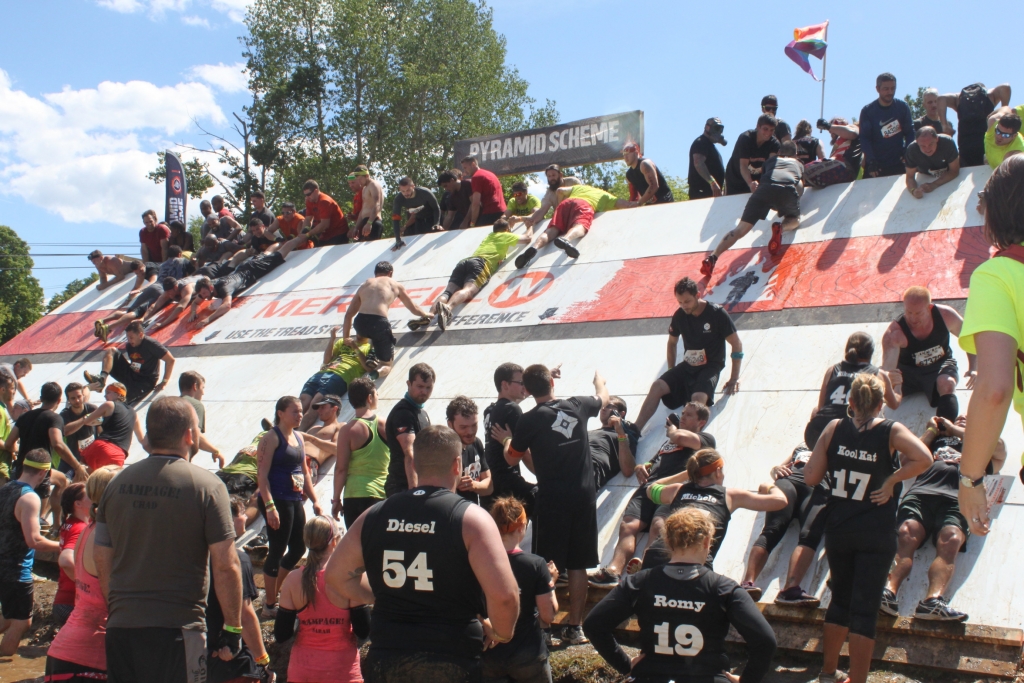
* Author’s Note: I intentionally narrowed the scope of this article to the United States. I did this simply because I hate to speak on something which I know nothing about, and frankly I’m just not informed enough as to the popularity and health of either of these sports anywhere else in the world to make an educated comment. However….I’d love to hear the thoughts of someone across the pond, or elsewhere, who is!
Disclaimer: The viewpoints expressed by the authors do not necessarily reflect the opinions, viewpoints and official policies of Mud Run Guide LLC, or their staff. The comments posted on this Website are solely the opinions of the posters.


Leave A Comment